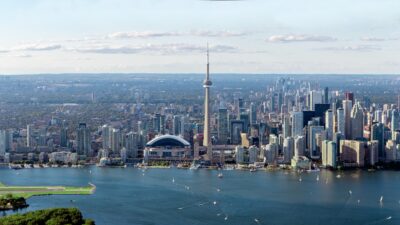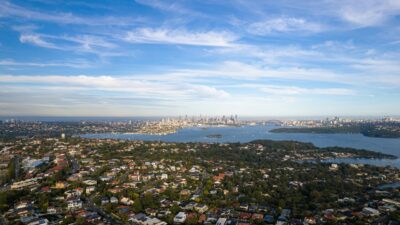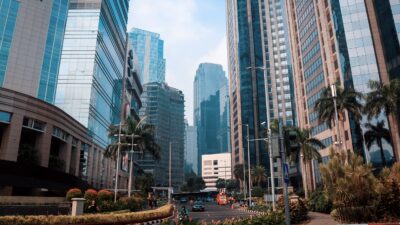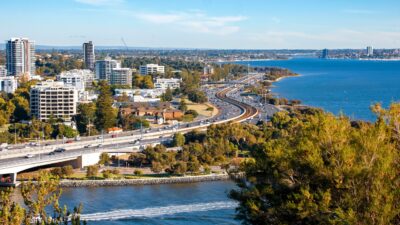Toll roads are a short-term, stop-gap solution to fund infrastructure, but they don’t ensure an entirely efficient and equitable road system.
Tolled roads in Australia have been around now for over 25 years (excluding bridge crossings) and have created camps of supporters and dissenters. Have they delivered value for money (to whom?) and have they reached their use by date as a preferred way to fund and deliver road infrastructure? In looking back over 25 years, this two part think piece crystallises some of the key elements of the toll road journey, raising questions about whether it is time to transition away from road-specific pricing to network pricing reform.
Toll Roads in Sydney, Melbourne and Brisbane historically have been a response to governments’ desires to improve infrastructure through participation of the private sector given a lack of public sector money, with this being a solution that could self-finance itself. This served to remove debt from state government accounts while opening up opportunities for private equity and debt, into what are still believed in the main to be attractive commercial investment opportunities. Many lessons have been learnt as both the public sector and private interests have grappled to understand the different (often conflicting) objectives of social welfare and profit maximisation. Central to the understanding of how tolling works is the allocation (or sharing) of risk. Post-construction, the key risk is patronage (hence revenue) risk, which has had a controversial history shrouded in optimism bias and strategic misrepresentation in order to make the numbers look good. Concessions are typically awarded to the highest bidder due to a public sector focus on upfront value extraction. While lessons have been learnt the hard way (i.e., toll roads going into administration, class actions being settled out of courts on the day of legal decision, private equity investors feeling they have been misled), the appetite for more tolling investment remains. Sydney currently has 135 kilometres of tolled routes (or 270 directional kms or over 700 lane kms), increasing to 185 kms (or 370 directional kms or over 900 lane kms) with current and pending construction.
Some key lessons relate to whether society gets value for money from private sector participation, is the toll level appropriate for the offered travel time savings relative to non-tolled routes, are the risks (patronage in particular) allocated and managed appropriately, and why do we have to continue to require forecasts to predict actual traffic so soon in the settling in period of a tolled road (ramp up)?
Private equity investors often expect their returns under what can only be described as overly optimistic expectations (‘optimism bias’) of early returns. Most forecasts have ramp-up built-in (often deep ramp-up), which is often appropriately accurate; however it is the steady-state that is the problem. Advisors to private equity investors should learn from the accumulated experiences and promote more realistic behavioural incentives that are currently bent out of shape and link them to timelines (in my view no earlier than the 5th year) in which equity related returns start to be more reliable. On top of this, we need to recognise that actual patronage levels, even over this period, are almost certainly to be lower than typically obtained in the medium-long term; with my advice tending towards estimates closer to 60% of forecasts for new road infrastructure. Indeed, I am aware of at least one major bank which acts as an advisor to the equity market doing just this. This starts to resolve optimism bias and strategic misrepresentation and hopefully reducing the risk of heading for administration and legal action. Even under these conditions, where the patronage risk is transferred to the concessionaire, there is a case to be made for focusing on debt financing until the risk profile of patronage is better established and stabilises and then invite private equity, or write in more binding conditions if this timing sequence is not adopted. This must, however, be distinguished from the benefits of equity during construction, which is very important, as it is equity on the line during the construction phase that makes sure these things are delivered on time (a key objective). This is a delicate mix of risks attached to delivery and operations.
One of the great errors in the current tolling model has been the political decision to prescribe a unit toll rate which is indexed over time by the consumer price index. This has resulted in ring fencing on a crucial mechanism that is capable of recognising the need to adjust the toll to ensure that the travel time savings are delivered commensurate with the value (to the users) of those time savings relative to the non-tolled route(s), given travellers’ value of travel time savings. Consultants have struggled to establish the best outcome in relation to patronage forecasts because of this seriously problematic imposition. Added to the fact that consultants associated with the bidding consortia are often told to improve the patronage forecasts in ways that require what might be best described as imaginative (‘long tail’) futures, extending the range of time related benefits (such as the toll quality bonus) in the search for even higher patronage forecasts for a fixed toll regime. This point aligns with Bain’s 21 ways to inflate toll road traffic forecasts¹. This becomes a commercial proposition in contrast to a network efficiency solution, resulting often in the loss of network welfare gains. Unfortunately, there is no incentive for the operator of a stand-alone asset to think ‘network’. There currently exists a complete failure across all tolled roads in Australia to optimise the level of toll, and I believe this is generally opposed to by the operating companies of tolled roads on many grounds, but specifically their liking of the greater certainty of revenue flows even if these flows are a mismatch in delivering a better performing road network. Only the state thinks ‘network’. This is a key issue. The state gives away pricing controls and then finds it difficult to optimise the network when it only has control over this important lever for part of the network. This is of little concern when there are small, isolated sections of privately-operated toll roads. It suddenly becomes a massive concern when these privately-operated toll roads ‘become’ the network!
One consequence is that we observe high levels of congestion on a growing number of tolled roads (especially in the peaks) that are meant to deliver noticeably better travel time savings than non-tolled routes. The M4 is a good example of this in Sydney. Meanwhile the competing (as per the contract with the toll road operator) roads tend to deteriorate (less maintenance) or are not expanded as they otherwise might. The criticism of this model is not in having private sector participation and a user pays pricing regime, but in the PPP model in place that has historically been used to deliver the much needed additional road infrastructure. It may be time to rethink the way we fund user-pays road infrastructure that removes the commercial imperative that results in a disconnect in delivering a network wide efficient road system.
¹ Bain, R. (2012) Twenty-One Limitations & Shortcomings with Traditional 4-Step Models, www.robbain.com. “In Australia, a number of the toll road concessions were awarded to the bidder offering the largest upfront payment to the state. That’s a recipe for disaster. Without checks and balances in place the bidding process simply turns into a competition on traffic numbers. Toll road traffic generates revenue, and the largest upfront payments can be justified by those with the highest traffic forecasts. The whole process becomes skewed and the numbers get bent out of shape in response. Considerable pressure is placed on traffic consultants to come up with the ‘right’ numbers; numbers that meet the requirements of the financial model.”
Image: Daniel Kuberek








